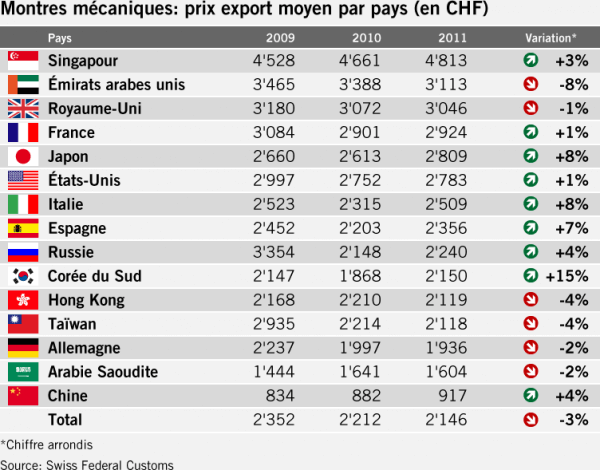In this ever more global economy, it’s almost reassuring to see that differences persist; that a country still wants its shelves stocked with different products to its neighbour. Watchmaking is no exception to this phenomenon which forces brands to adapt. Economic history is filled with products that failed to take off in one or other country. Just one example among many, Volkswagen slipped up in the late 1990s when it proposed the same cars in the United States as it did in Europe. Nestlé, on the other hand, can go to the top of the class. As well as selling products that are identical across all its markets, the multinational offers a host of goods adapted to regional habits and taste.
Watchmakers could take the agrofood giant as an example. Industry figures show that different countries are far from uniform in the watches they buy, in terms of price and to an even greater extent styles and metals. Despite this, few sectors are more inclined to consider customers from the same country as being cast in the same mould, as though a liking for this or that brand or model is a corollary of carrying a particular passport. We often hear, for example, how the Chinese want nothing but small, slim, hours-minutes-seconds watches in gold. While this may be a good rule of thumb, imposing steel watches have their takers too, and increasingly so.
Regional differences
Let’s add some numbers. The average export price for a mechanical watch in 2011 was CHF 2,146. However, this varies considerably between markets. Notwithstanding the impact of import duties and exchange rates, particularly when the Swiss franc is strong, the average export price of a Swiss mechanical watch in Singapore rose 3% over a year to CHF 4,813. This is further proof that Singapore is a mature market of connoisseurs and collectors looking for complicated and fine watches. Compare this to the United States, where average price comes in at CHF 2,738 (+1%), even though watchmakers have made significant inroads into the American market. In Japan it grew 8% last year to CHF 2,809, no doubt a consequence of the strong yen although this alone cannot account for the fact that average price in Singapore is almost as much again. In spite of many brands’ claim to have repeatedly hiked prices to alleviate the effect of the strong franc, Hong Kong posted a 4% decrease in average price, which dropped to CHF 2,119.
Less surprising is the United Arab Emirates’ second-place ranking, at CHF 3,113. A taste for gem-set watches, which are logically more expensive than timepieces with no precious stones, very likely explains this. Figures for China reveal that despite an undeniable and so far insatiable appetite for watches, often worn to indicate a successful career, the market is still a long way from Singapore’s level of maturity. Average price was just CHF 917 in 2011, although import duty of 11 to 23% in addition to a 20% “luxury tax” on goods in excess of 100,000 yuans (CHF 1,550) distort the picture. Even so, the situation is vastly different to the one we might have imagined, and puts paid to the cliché of the Chinese consumer turning their nose up at anything but the most expensive products.

Prices globally below pre-crisis levels
Making comparisons with 2009 is more of a challenge, as much of the world was in the throes of economic crisis then, causing consumers to think twice before spending. Figures do reveal that in certain countries, average price has still to return to pre-crisis level, and in some markets has fallen below that of 2009. This applies to exports across the board. Russia, the United States and Germany, although large markets, are three of the most striking examples. Surprisingly, economic difficulties in Spain and Italy don’t shown up in figures for these two countries, where average export price has increased. Nor have the dramatic events that unfolded in Japan last spring had any repercussion on average price there. What lesson can we learn? That when a country or an entire continent is in economic dire straits, a global presence is the best protection. Pinning expectations on specific markets exposes business to far too many risks. And once down, it takes years to bounce back.










